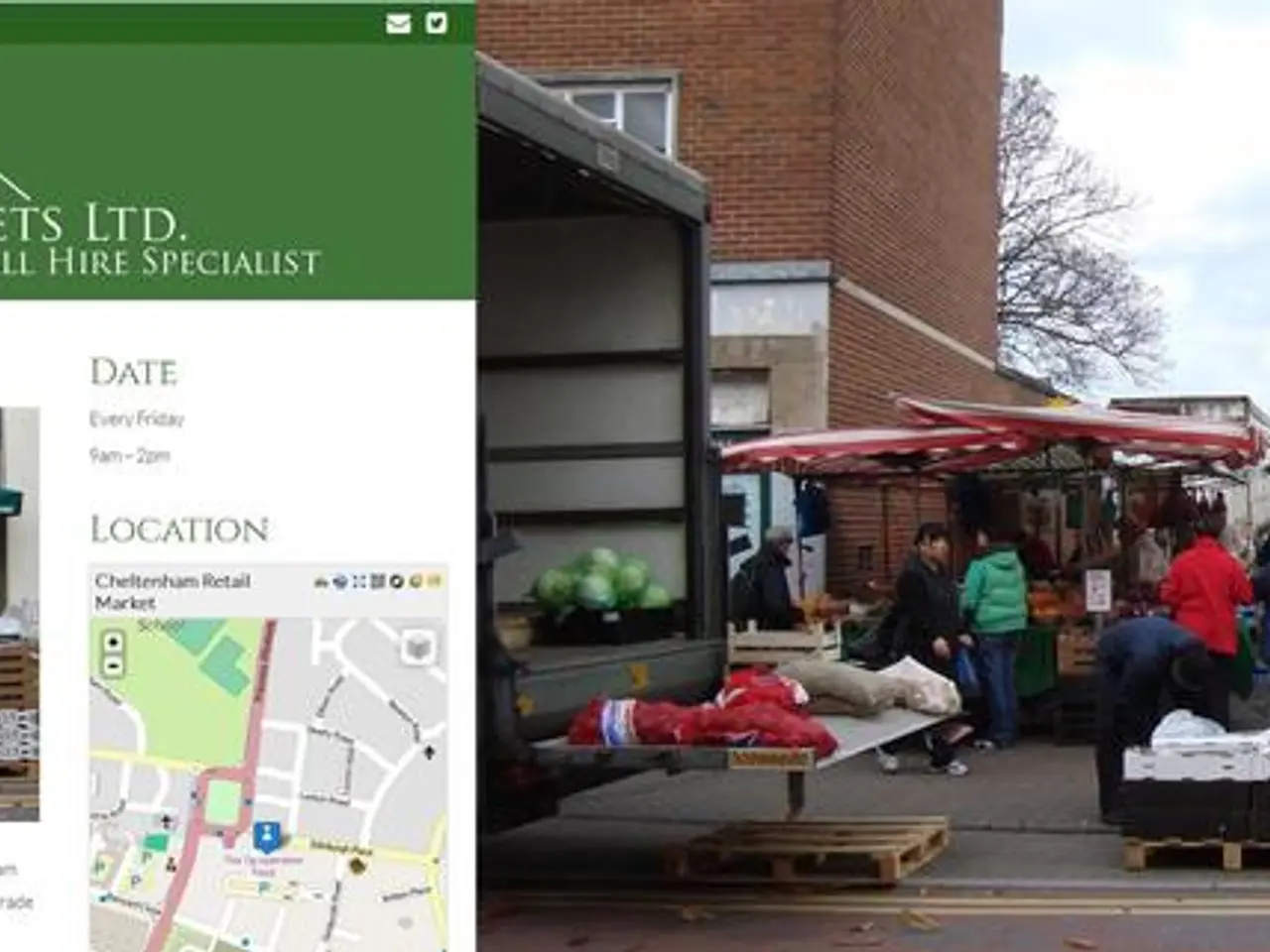Unveiling the Upgraded DB Long-Distance Train Fleet: The ICE L Arrival Amidst Chaos?
High-speed trains receive inaugural modern ICE line.
Social Media Channels: Facebook, Twitter, WhatsApp, Email, Print, Copy Link.
The aging long-distance train fleet of Deutsche Bahn (DB) is getting a facelift - but at what cost? While the arrival of the first four ICE L trains is imminent, the passenger association Pro Bahn voices concerns about potential service gaps due to an accelerated removal of older trains [2].
Despite setbacks in Talgo's production, Deutsche Bahn remains optimistic, expecting to receive the first ICE L trains in the second half of 2025. The "L" in ICE L stands for "Low Floor," signifying the easy-access design of these new trains [1]. In total, 79 ICE L trainsets have been ordered to refresh DB's long-distance fleet, currently averaging 18 years old. By 2030, the company aims to lower this average age to 12 years, potentially enhancing reliability across railway networks [2].
But what of the interim? Pro Bahn fears that withdrawing too many old trains will create a vacuum before the new models arrive, potentially leading to reduced train numbers on specific routes [2]. The Wiesbaden-Frankfurt-Leipzig-Dresden and Hamburg-NRW-Bonn-Frankfurt-Nuremberg-Vienna routes will reportedly experience reduced services, causing inconveniences for passengers [2].
The Backbone of ICE Fleet Reinforcements
In early 2022, Deutsche Bahn welcomed the last of 137 new ICE 4 trains, manufactured by Siemens Mobility [2]. With at least 444 seats per train and speed capabilities of up to 265 kph, these trains form the backbone of the ICE fleet [2]. Since 2017, DB's ICE train count has grown from approximately 270 to around 400 today.
Additionally, the delivery of the ICE 3 Neo trains is ongoing, with 90 expected to be operational by 2028. In 2025 and 2026, 15 and 16 ICE 3 Neo trains will be added to the fleet, respectively [2]. These trains boast frequency-independent windows for improved mobile reception, among other features [2].
Currently, ICE 3 Neo trains are serving high-speed routes throughout Germany and on international connections between Frankfurt, Amsterdam, and Brussels [2].
The ICE L: The Replacement for Intercity 1
The much-anticipated ICE L is set to replace the aging Intercity 1 trains and will debut on domestic German routes after delivery [2]. Visually, the ICE L resembles Intercity trains more than the familiar ICE trains, boasting a seamless entrance and superior passenger comfort [2]. Passengers will appreciate the new ICE interior design, featuring newly developed seats, a dynamically changing light ambience, power outlets, and tablet holders [2].
Capable of speeds of up to 230 kph and seating up to 562 passengers, the ICE L trains will bolster DB's long-distance fleet modernization efforts [2].
Despite the positive outlook, ongoing production delays have Pro Bahn questioning if the new acquisitions can replace the retired trains quickly enough to sustain regular services [2].
Transition Challenges and Opportunities
Amid the modernization process, DB has recently retired 14 older ICE 3 trains of the 406 series, with another 10 ICE T trains expected to follow by the end of the year [2]. In addition, there are around 36 ICE-2 trains, in service since 1996, scheduled for gradual removal from traffic by 2027 [2].
Recently, DB sold 17 double-decker Intercity 2 KISS trains to the Austrian Federal Railways, initially obtained as a stopgap for deliver issues with other vehicles [2]. With these problems now resolved, this move indicates progress in DB's fleet management.
As the fleet dynamics evolve over the next few years, DB assures the overall seat capacity will increase, despite the ongoing fluctuations in train numbers due to withdrawals and new acquisitions [2]. Pro Bahn remains unconvinced, expressing concerns about potential service disruptions as both older and newer trains experience teething problems [2].
As the changing landscape unfolds, passengers will likely face a period of uncertainty and possibly crowded conditions on some routes. However, the eventual deployment of the ICE L trains will undoubtedly help ensure a more comfortable and modern long-distance travel experience for all, assuming production delays can be effectively managed.
[1] Deutsche Bahn, "Ice L." Accessed on March 10, 2023. https://www.bahn.com/ digitalassets/cms/de_CH/knowledge-bank/topics/product-fleet/new-trains/ice-s-evolution/icel.pdf
[2] Pro Bahn, "Vehicle strategy of DB long-distance traffic is deemed chaotic by the association Pro Bahn." Accessed on March 10, 2023. https://www.pro-bahn.de/presse/presseite/pressemitteilungen/
[3] Railway Technology, "Deutsche Bahn orders 60 ICE L trainsets from Talgo." Accessed on March 10, 2023. https://www.railway-technology.com/features/smart-railways/
[4] Siemens Mobility, "Ice 4." Accessed on March 10, 2023. https://www.siemens-mobility.com/global/products/transportation-systems/trains-for-stationary-applications/trams-metros-trains-for-long-distance-passenger-transport/ice-4
[5] Cities Today, "Deutsche Bahn and Talgo sign agreement for as many as 79 ICE L high-speed trains." Accessed on March 10, 2023. https://www.citystoday.com.au/deutsche-bahn-talgo-ice-l-agreement/
Important Notes: Deutsche Bahn is experiencing considerable delays in the delivery of its ICE L trains. The original plan called for these trains to be operational by fall 2024, but the first units will likely not arrive until at least the second half of 2025. Additionally, there are reports that DBmay eventually reduce its order from 79 trainsets to 60 because of ongoing delivery delays and potential quality concerns. These factors may strain Deutsche Bahn's operational capabilities, create temporary service disruptions, and cause pauses in the modernization of its long-distance fleet.
Related Stories:- "Deutsche Bahn Achieves Record Profits Amid Modernization Drive" - Read how DB's recent successes have been fueled by ambitious infrastructure projects and investments in innovative technology.- "DB Cargo Under Fire for Environmental Concerns Surrounding Coal Transportation" - Learn about challenges faced by DB Cargo as it seeks to transition its operations to greener alternatives while balancing demands from various stakeholders.
- In the process of modernizing their long-distance train fleet, Deutsche Bahn (DB) has embarked on vocational training programs to ensure they have a capable workforce for the maintenance and operation of new trains like the ICE L, which are expected to replace Intercity 1 trains.
- The finance department of Deutsche Bahn is closely monitoring the delivery timeline of the ICE L trains and the ongoing production delays, as the updated arrival dates could impact industry-related budgeting and transportation plans for rail services across Germany and potentially on international routes.








